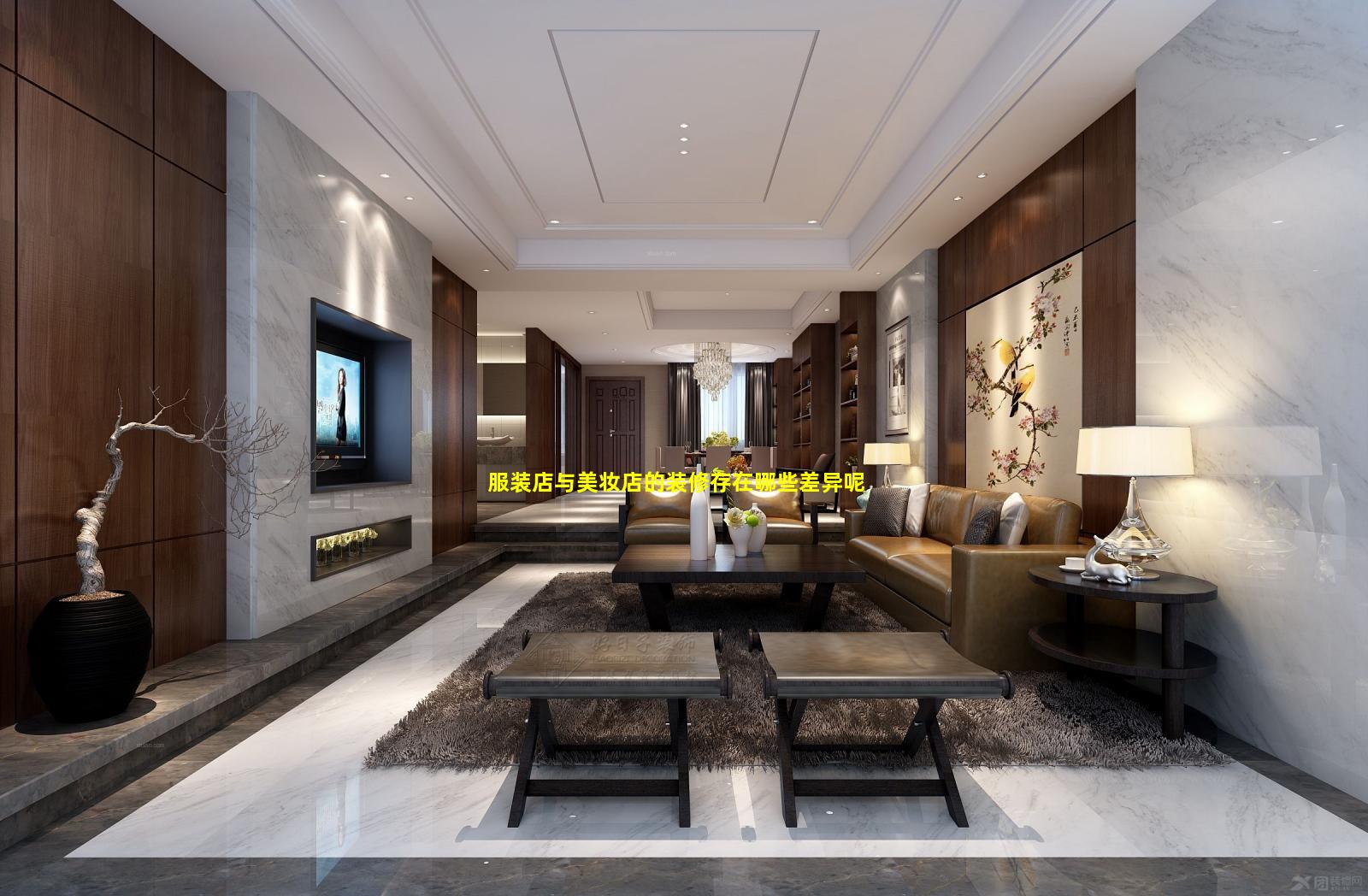





服装店与美妆店的装修差异
1. 空间布局
服装店:通常采用开放式布局,便于顾客浏览和试穿。
美妆店:采用更私密的布局,设有咨询台和试妆区,为顾客提供个性化服务。
2. 照明服装店:明亮的照明,突出服装的细节和颜色。
美妆店:柔和的照明,营造温馨舒适的氛围,便于顾客试妆。
3. 色彩服装店:通常使用中性色调,如白色、灰色或黑色,作为背景,突出服装。
美妆店:使用更大胆的色彩,如粉色、紫色或金色,营造奢华和精致的氛围。
4. 陈列服装店:服装通常悬挂在衣架上或折叠在货架上,便于顾客浏览。
美妆店:产品陈列在柜台、展示架或抽屉中,突出产品的包装和成分。
5. 家具服装店:设有更衣室、镜子和休息区,方便顾客试穿和购物。
美妆店:设有咨询台、试妆椅和镜子,为顾客提供个性化服务。
6. 装饰服装店:通常采用时尚和现代的装饰,突出服装的风格。
美妆店:采用更精致和奢华的装饰,营造一种呵护和宠爱的氛围。
7. 气氛服装店:通常营造一种轻松和休闲的氛围,鼓励顾客浏览和购物。
美妆店:营造一种更私密和奢华的氛围,让顾客感觉受到重视和呵护。
Differences in Interior Design between Clothing Stores and Beauty Stores
1. Lighting
Clothing stores: Bright, natural lighting to showcase clothing colors and textures.
Beauty stores: Dim, warm lighting to create a relaxing and intimate atmosphere.
2. Color Palette
Clothing stores: Neutral colors (white, black, gray) to allow clothing to stand out.
Beauty stores: Soft, feminine colors (pink, lavender, peach) to evoke a sense of luxury and indulgence.
3. Display Fixtures
Clothing stores: Mannequins, racks, and shelves to display clothing in various styles.
Beauty stores: Counters, display cases, and shelves to showcase products and provide a personalized shopping experience.
4. Layout
Clothing stores: Open and spacious layout to encourage browsing and easy navigation.
Beauty stores: Smaller, more intimate layout with designated areas for different product categories.
5. Ambiance
Clothing stores: Energetic and inviting atmosphere with music and interactive displays.
Beauty stores: Tranquil and relaxing atmosphere with calming scents and soft music.
6. Technology
Clothing stores: Mirrors with virtual tryon capabilities and interactive touchscreens.
Beauty stores: Skin analysis devices, virtual makeup tryons, and personalized product recommendations.
7. Customer Service
Clothing stores: Sales associates provide assistance with finding sizes and styles.
Beauty stores: Beauty consultants offer personalized consultations, makeup applications, and skincare advice.
8. Scent
Clothing stores: Neutral or subtle scents to avoid overpowering the clothing.
Beauty stores: Signature scents that evoke a sense of luxury and indulgence.
9. Accessories
Clothing stores: Jewelry, handbags, and scarves to complement outfits.
Beauty stores: Brushes, applicators, and other tools to enhance the beauty experience.
10. Target Audience
Clothing stores: Fashionconscious individuals seeking a wide range of styles.
Beauty stores: Beauty enthusiasts and those seeking professional skincare and makeup advice.

Differences in Interior Design between Clothing Stores and Beauty Stores
1. Lighting:
Clothing stores: Bright, natural lighting to showcase fabrics and colors accurately.
Beauty stores: Dim, warm lighting to create a relaxing and intimate atmosphere.
2. Color Palette:
Clothing stores: Neutral colors (white, gray, beige) to allow the clothing to stand out.
Beauty stores: Soft, feminine colors (pink, lavender, peach) to evoke a sense of luxury and pampering.
3. Fixtures and Displays:
Clothing stores: Open racks, mannequins, and display tables to showcase a wide variety of items.
Beauty stores: Glass counters, shelves, and drawers to organize and display products neatly.
4. Ambiance:
Clothing stores: Energetic and inviting, with music and interactive displays.
Beauty stores: Tranquil and relaxing, with soft music and comfortable seating areas.
5. Scent:
Clothing stores: Neutral or subtle scents to avoid overpowering the fabrics.
Beauty stores: Signature scents (e.g., floral, citrus) to create a memorable and luxurious experience.
6. Technology:
Clothing stores: Mirrors with builtin lighting and touchscreens for virtual tryons.
Beauty stores: Skin analysis devices, makeup stations with adjustable lighting, and interactive product displays.
7. Staff:
Clothing stores: Sales associates who provide assistance and style advice.
Beauty stores: Beauty consultants who offer personalized skincare and makeup recommendations.
8. Layout:
Clothing stores: Open and spacious, with clear sightlines to facilitate browsing.
Beauty stores: More intimate and compartmentalized, with designated areas for different product categories.
9. Accessories:
Clothing stores: Scarves, hats, jewelry, and handbags to complement the clothing.
Beauty stores: Brushes, sponges, applicators, and other tools to enhance the beauty experience.
10. Target Audience:
Clothing stores: Fashionconscious individuals seeking a wide range of styles.
Beauty stores: Beauty enthusiasts and skincare professionals seeking highquality products and expert advice.
服装店和美容店结合装修图
布局:入口:宽敞的入口,通向服装店和美容店。
服装店:位于入口右侧,展示各种服装和配饰。
美容店:位于入口左侧,提供美发、美甲和护肤服务。
休息区:位于服装店和美容店之间,提供舒适的座位和免费 WiFi。
设计元素:现代简约风格:干净的线条、中性色调和充足的自然光。
展示架:时尚的展示架,展示最新系列和精选单品。
试衣间:宽敞的试衣间,配有充足的镜子和照明。
美容店:奢华舒适:柔和的灯光、豪华的家具和令人放松的香氛。
美发区:配备现代化的美发设备和舒适的理发椅。
美甲区:提供各种美甲服务,配有舒适的手部护理椅。
护肤区:提供定制护肤服务,配有先进的护肤设备。
结合元素:互补色调:服装店和美容店使用互补色调,营造和谐的氛围。
共享休息区:休息区连接两个区域,为顾客提供放松和社交的空间。
交叉推广:服装店和美容店交叉推广彼此的服务,为顾客提供全面的购物和美容体验。